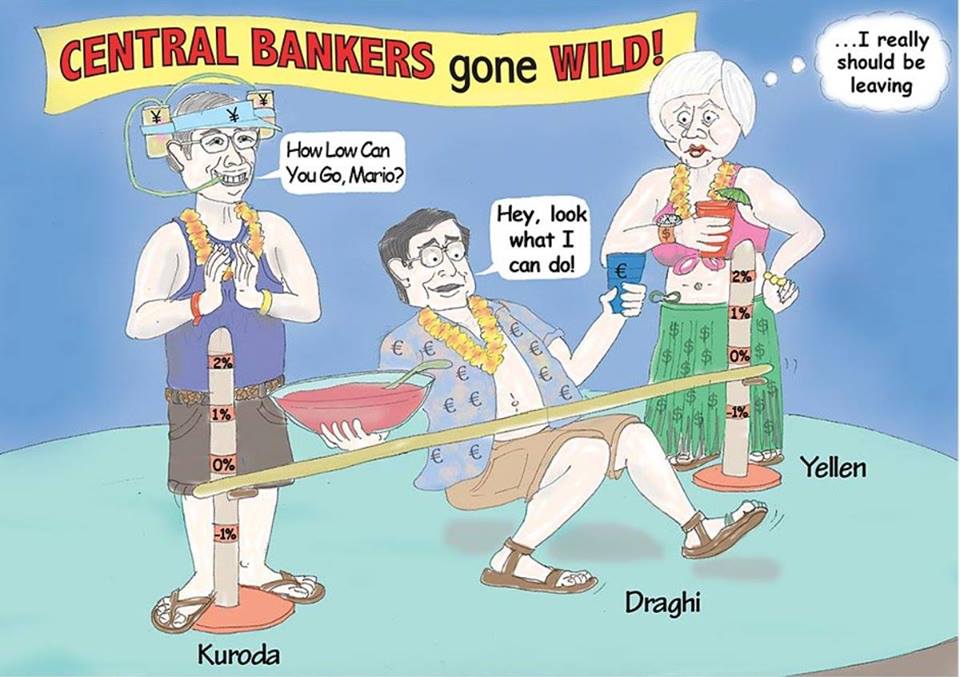The Looming Bernanke-Yellen Bubble-Depression

My biggest takeaway from the Yellen press conference after the rate hike announcement in December 2016 is that she clearly left the possibility of four rate hikes this year on the table. (March, June, September and December).The markets heard three (March, June and one more in either September or December), but the markets still don't get it. The Fed is not engaged in a normal economic rate hike cycle. It is engaged in a desperate effort to get rates to 3% before the next recession.The Fed does not need a strong economy to hike. It just needs an economy that's "good enough" as defined by the absence of the three pause factors noted above.But the problem is that the economy is not "good enough." In fact, it's not even good. It's weak. The Fed may raise rates in June, but by summer, we'll see weak data, disinflation and maybe a recession.But if a recession arrives a few months or even a year from now, how is the Fed going to cut rates 3% if they’re only at 1%?
The answer is, they can’t.So the Fed’s desperately trying to raise interest rates up to 300 basis points, or 3%, before the next recession, so they have room to start cutting again. In other words, they are raising rates so they can cut them.And that’s what Wall Street doesn’t understand. It’s still operating from its old assumptions about the business cycle.The Fed is hiking rates not because economy is strong, but because it’s desperate to catch up with the fact that Bernanke skipped a whole cycle in 2009, 2010 and 2011. Now they are playing catch-up.This is a result of nine years of unconventional monetary policy — QE1, QE2, QE3, Operation Twist and Zero interest rate policy (ZIRP). This has never happened before. It was a giant science experiment by Ben Bernanke.
So now What?
The Fed still has a long way to get to 3%. That means eight more hikes of 25 basis points each, every other meeting, or four hikes a year. That’ll take two years, which means the mission would be accomplished by June 2019.
Investors should get gold at still-reasonable levels while they can. The time to accumulate a position in gold and gold miners is now, while prices are relatively attractive compared with where they’ll be when the Fed reverses course.Fundamental supply and demand has entered the picture, with physical shortages being reported from Zurich to Shanghai. There’s also strong demand coming from central banks in China, Russia, Central Asia and elsewhere. Individual demand for physical gold also remains high in China and India.